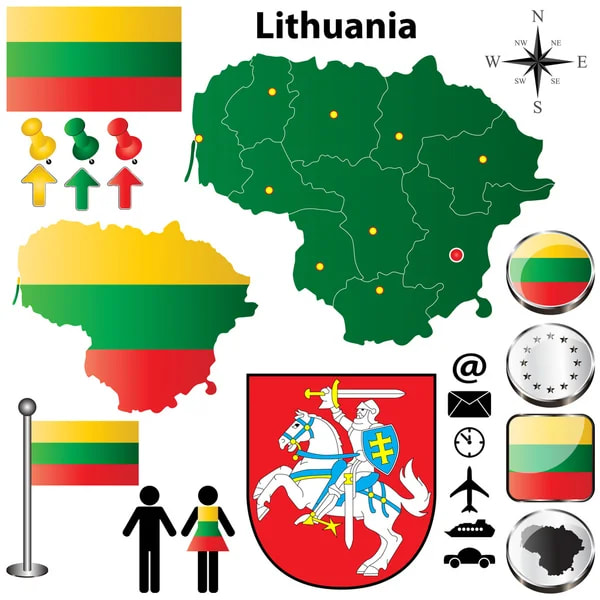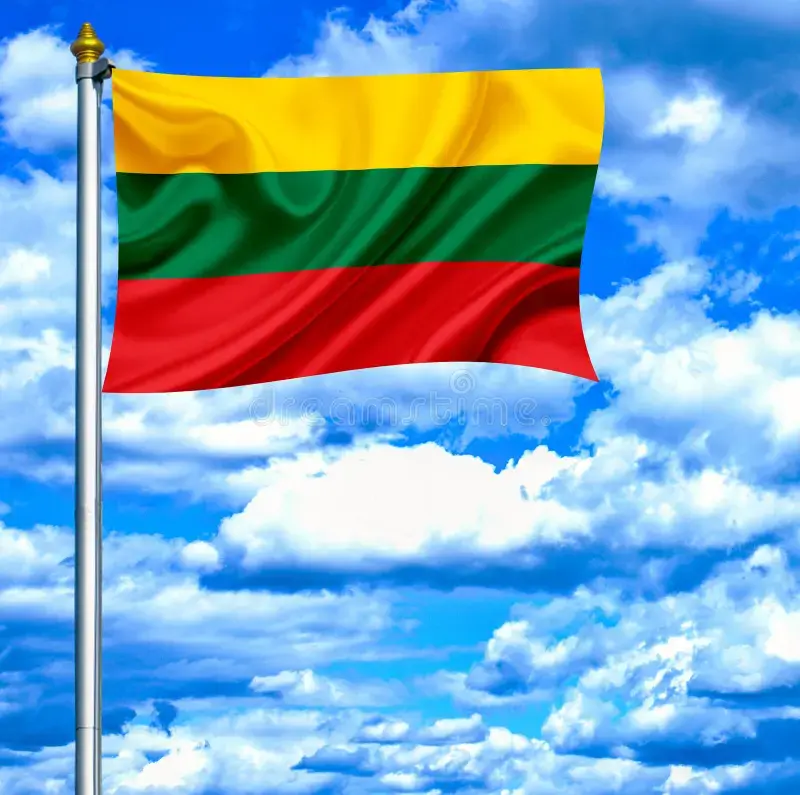Lithuania is a country in the Baltic region of Europe. It is one of the three Baltic states and lies on the eastern shore of the Baltic Sea, bordered by Latvia to the north, Belarus to the east and south, Poland to the south and the Russian semi exclave of Kaliningrad Oblast to the southwest. This country has an area of 25, 000 sq miles and a population of 3 million. Its largest city is Vilnius and is also its capital. Some other major cities are Kaunas, Klaipeda.
The southeastern shores of the Baltic were inhabited by the Baltic tribes. In 1230s, Lituania lands were united for the first time by Mindaugas, who formed the Kingdom in 1253. Collaborating with the Grand Duchy in the 14th century Lithuania became the largest country in Europe. In 1936 the grand Duchy entered into a de facto personal union with the Crown of the Kingdom of Poland. This unity became a bi-confederal Polish-Lithuania Commonwealth forming the largest and most prosperous states in Europe. After two centuries, the Commonwealth dismantled then the Russian Empire annexed it.
By the end of World War I, Lithuania declared Independence in 1918 . This country was occupied by the Soviet Union, then Nazi Germany, before being reoccupied by the Soviets in 1944, which lasted until the early 1950s. In 1990 before the dissolution of the Soviet Union Lithuania proclaimed the restoration of its independence.
Lithuania is a developed country with a high income and advanced economy. Eighty-three percent of its occupants are Lithuanians, Poles comprise up to 6.3%, Russians, 5%, Belarusians, 2.1% Ukrainians account for 1.7% and the remaining 2.3% fall in the category as others. Christianity is the major religious group with almost 75% of the population, this is followed by 6.1% having no religion, and 13.7 % not revealing their religious persuasion. The government is a unitary semi-presidential republic with a president, a prime minister, and a speaker. The economy is propelled by services sector which accounts for 67% of its GDP, with agriculture, chemical products, machinery, and mineral products adding to the mix. Its current GDP stands at 77.84 billion USD
The southeastern shores of the Baltic were inhabited by the Baltic tribes. In 1230s, Lituania lands were united for the first time by Mindaugas, who formed the Kingdom in 1253. Collaborating with the Grand Duchy in the 14th century Lithuania became the largest country in Europe. In 1936 the grand Duchy entered into a de facto personal union with the Crown of the Kingdom of Poland. This unity became a bi-confederal Polish-Lithuania Commonwealth forming the largest and most prosperous states in Europe. After two centuries, the Commonwealth dismantled then the Russian Empire annexed it.
By the end of World War I, Lithuania declared Independence in 1918 . This country was occupied by the Soviet Union, then Nazi Germany, before being reoccupied by the Soviets in 1944, which lasted until the early 1950s. In 1990 before the dissolution of the Soviet Union Lithuania proclaimed the restoration of its independence.
Lithuania is a developed country with a high income and advanced economy. Eighty-three percent of its occupants are Lithuanians, Poles comprise up to 6.3%, Russians, 5%, Belarusians, 2.1% Ukrainians account for 1.7% and the remaining 2.3% fall in the category as others. Christianity is the major religious group with almost 75% of the population, this is followed by 6.1% having no religion, and 13.7 % not revealing their religious persuasion. The government is a unitary semi-presidential republic with a president, a prime minister, and a speaker. The economy is propelled by services sector which accounts for 67% of its GDP, with agriculture, chemical products, machinery, and mineral products adding to the mix. Its current GDP stands at 77.84 billion USD

